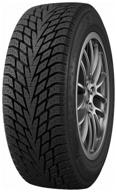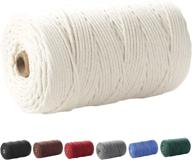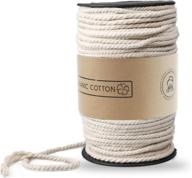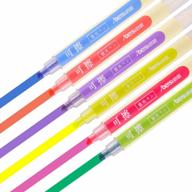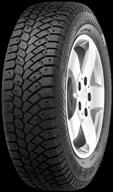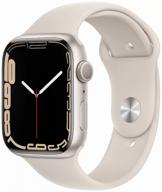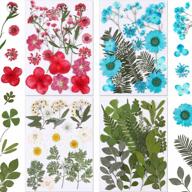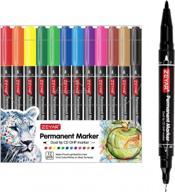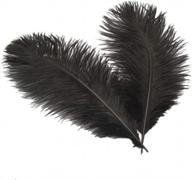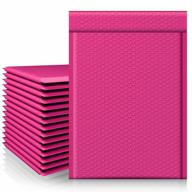Top products in 🎨 Craft Supplies
Must-Have Craft Supplies for Beginners
Getting started with a new craft can be daunting, especially when you look at the vast array of tools and materials available. However, you don't need to buy everything at once - there are some basic supplies that will get you through your first few projects no matter what type of crafting you want to try.
Similar products
Basic Crafting Tool Kit
Having the right tools makes crafting easier and more enjoyable. Here are some tool kit essentials:
- Scissors - Invest in a good pair of all-purpose scissors for cutting paper, fabric, etc.
- Ruler - A 12-inch ruler with a grid is ideal for measuring and marking straight lines.
- Pencils & Eraser - Use these for sketching designs, tracing patterns, etc.
- Needle Nose Pliers - Helpful for bending wire and opening jump rings.
- Craft Knife - Useful for intricate cutting work.
- Tweezers - Great for precision work like beading or model making.
Adhesives & Fasteners
Having a selection of adhesives and fasteners will allow you to join materials together in various ways:
- Craft Glue - An all-purpose white glue for paper, cardboard, wood, etc.
- Hot Glue Gun & Sticks - Strong instant adhesive, good for fabrics, some plastics, wood.
- Double-Sided Tape - Good for scrapbooking embellishments, temporary bonds.
- Safety Pins - Useful for temporarily holding fabric pieces together.
- Straight Pins - For pinning paper patterns or quilting squares.
Paper & Cardstock
Paper is useful for many crafts besides just scrapbooking:
- Cardstock - Heavy paper for making sturdy cards, invitations, boxes, etc.
- Origami/Craft Paper - Lightweight paper in bright colors, for origami, decoupage, etc.
- Vellum - Translucent paper used for overlays, lampshades, greetings cards.
- Patterned Scrapbook Paper - Great for scrapbooking, gift wrap, paper craft decorations.
Fabric & Textiles
Basic fabric stash essentials include:
- Cotton Fabric - Medium weight cotton in neutral colors to start.
- Felt Sheets - Stiff but flexible material great for cut-out shapes, ornaments.
- Muslin - Versatile plain weave cotton, used for prototypes and practice.
- Quilting Cotton - Small quantity of printed fabric for patchwork.
Having these fundamental supplies on hand will give beginners the tools to explore new crafts without having to buy project-specific materials right away. Start your crafting journey with a versatile set of starter supplies for endless creativity!
Essential Tools for Polymer Clay Crafting
Polymer clay is an incredibly versatile crafting material that can be shaped, molded, sculpted, and textured in endless ways. Having the right tools makes working with polymer clay much easier and expands the creative possibilities. Here are some polymer clay essentials every crafter should have.
Rolling Pin
A rolling pin is essential for flattening clay and getting an even thickness when making sheets or slabs. Acrylic works best as it won't stick to the clay. Mini rolling pins are also handy for small projects.
Clay Blade/Cutter
A stiff blade makes clean, smooth cuts through clay. Tissue blades are ideal as they have a thin, sharp edge. Craft knives also work well.
Another interesting products
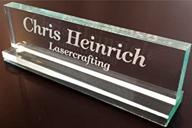

38 Review

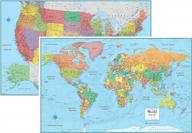

45 Review

Clay Sculpting Tools
Sculpting tools like loops, wedges, and balls allow you to manipulate and shape clay in detail. Having a variety in different shapes and sizes expands creative options.
Clay Smoother/Burnisher
These tools compress and smooth the clay's surface. Options include:
- Acrylic roller
- Steel burnishing tool
- Agate stone
- Wet finger
Texture Mats/Sheets
Adding texture creates interesting effects on clay. Options for texturing include:
- Leather stamping sheets
- Quilting embossing mats
- Woven lattice mats
- Press designs/objects into raw clay
Clay Work Surface
A smooth, non-stick work surface allows the clay to be rolled and moved easily. Good options:
- Glass work board
- Marble or granite slab
- Acrylic sheet
Oven Thermometer
Monitoring the exact oven temperature is crucial when baking clay. An oven thermometer eliminates any uncertainty.
Having these basic tools makes polymer clay crafting much more efficient and enjoyable. Invest in quality tools, especially blades and sculpting instruments, as cheap versions can hinder creativity. With a well-stocked toolbox, you'll be ready to unlock the full creative potential of polymer clay!
Best Adhesives for DIY Crafts
Having the right adhesive makes all the difference for DIY crafts. You need one that will bond securely but allow adjustments if needed. Consider these top adhesives for your next craft project.
White Craft Glue
An all-purpose white glue like Elmer's is essential for paper crafts. It dries clear, bonds well to porous surfaces like paper and cardboard, and allows repositioning. Useful for:
- Collages
- Paper mâché
- Adhering photos in scrapbooks
Hot Glue Gun
Hot glue sets and dries quickly to form a strong bond. The thick consistency fills gaps. It works on wood, fabric, some plastics, and more. Perfect for:
- Assembling simple wood items like birdhouses
- Adhering rhinestones and embellishments to fabrics
- Quick scrapbook page assembly
Epoxy Resin
Two-part epoxy resin creates a glassy, durable finish. It self-levels and dries crystal clear. Use it for:
- Coating and sealing crafts like jewelry charms
- Tabletops featuring collages or photos under resin
- Filling cracks and knots in wood before painting
Spray Adhesive
Spray glue like 3M Super 77 applies a fine, even coat and dries quickly. It's repositionable. Great for:
- Applying large background papers on canvases
- Temporary spray mount for stencils
- Laminating projects with clear plastic
Test adhesives on scrap pieces first. Allow full drying time. Follow the manufacturer's directions for best results with any adhesive. With the right glue for the job, your DIY craft visions will come to life professionally and permanantly.
How to Organize Your Craft Stash
Does your craft closet look like a cluttered mess? Are you constantly buying duplicate supplies because you can't find what you already have? Getting your craft stash neatly organized makes projects go smoother and lets you rein in unnecessary spending. Follow these tips to bring order to your creative chaos.
Take Inventory
First, take everything out and do a full inventory. This helps you see exactly what you have to work with. As you do, get rid of:
- Dried up glue and paint
- Broken tools
- Scraps too small to use
Organize like items together in piles to see how much of each category you have. This makes it easier to decide on storage solutions.
Label Storage Containers
Clear plastic bins or boxes are ideal for storing craft supplies. Label each bin by category such as:
- Paper/cardstock
- Fabric
- Beads and embellishments
- Stencils and stamps
Use containers with lids to keep out dust. Store sharp tools like rotary cutters in hard cases.
Designate Space
Give each supply category its own space. Options include:
- Shelves for bins and baskets
- Over the door hanging racks for tools
- Drawers for small items like fasteners
- Cabinets with dividers for paper
Inventory as You Go
Maintain your organization by putting new purchases in their designated homes right away. Update your inventory list periodically. Doing mini organization sessions prevents catastrophe down the road.
The time spent organizing your craft stash pays off in efficiency, cost savings, and most importantly - more time for creating! You'll wonder how you ever managed the clutter before.
Top Trends in Scrapbooking Supplies This Year
Scrapbooking continues to grow in popularity as more people discover this enjoyable way to preserve memories. If you want to keep your pages looking fresh, check out these trending scrapbooking supplies for 2022.
Whimsical Die Cut Shapes
Fun, playful die cut shapes like clouds, hot air balloons, and flowers add whimsy to layouts. Mix sizes and layer them for dimensional interest.
Acid-Free Adhesive Dots
Tiny adhesive dots make it easy to attach embellishments. Look for acid-free versions to avoid damaging photos over time.
Washi Tape
This decorative paper tape comes in endless colorful patterns. Use it to accent pages or create grids for photos.
Embellishment Kits
All-in-one kits with coordinated die cuts, alphabet stickers, and other embellishments save time. Buy ones matching your theme or color scheme.
Stamp Sets
Stamps add customized elements fast. Popular choices this year include travel-themed phrases, handwriting/script fonts, and floral prints.
Metallic Details
Gold, rose gold, silver, and copper details lend an elegant touch. Try metallic pens, foil paper, or acetate overlays.
Vellum and Acetate
These translucent papers are perfect for soft, layered looks. Use as subtle backgrounds or frame photos with stamped vellum.
Focus on quality acid-free supplies so your memories last. With these latest scrapbooking supplies, you can create timeless pages you'll treasure forever.
Choosing Fabric for Sewing and Quilting Projects
Selecting the right fabric for your next sewing or quilting project is key. Keep these tips in mind when shopping for material to ensure your vision comes to life.
Fiber Content
Natural fibers like cotton and linen breathe well, take dye nicely, and have an organic drape. Synthetics like polyester don't wrinkle easily but lack absorbency. Blends marry the best properties of both. Pick what suits your specific project.
Fabric Weight
Lighter fabrics work best for:
- Dresses
- Blouses
- Quilt backing
- Lining
Medium to heavy weights are preferable for:
- Outerwear
- Denim
- Drapes
Fabric Texture
Consider the drape, feel, and structure you want:
- Smooth, crisp cottons for tailored pieces
- Sheers for ethereal overlays
- Canvas for structured bags
- Flannel for cozy quilts
Fabric Width
Wider widths limit seams for:
- Quilt backing
- Curtains
- Blankets
Narrower widths work for:
- Clothing
- Small accessories
Pre-washing
Pre-wash cottons and linens or dry clean wools to allow for shrinkage and prevent running. Check labels for specific instructions.
By considering these fabric factors, you'll end up with the perfect textile for your next creative vision.
How to Use Amazon Prime to Buy Craft Supplies
Amazon Prime is a great resource for crafting on a budget. The membership program offers fast free shipping and other benefits that can save crafters time and money on supplies.
Search and Filter
Amazon Prime’s massive online selection includes thousands of arts and crafts supplies across every category imaginable. To narrow it down, use the search bar to look for specific items like “embroidery floss” or “acrylic paint sets.” Refine the results using filters on the left side of the page to limit by price, brand, Prime eligibility and more.
Compare Options
Amazon makes it easy to compare similar products side-by-side. Click the “Compare” box next to items you’re considering to see the features, specs, prices and ratings lined up. This makes it easier to select the best option for your needs and budget.
Check Reviews
Checking the reviews can reveal important details about a product’s quality, ease of use, and value for money. Sort reviews by “Most recent” to see feedback on the latest versions of an item. Reading both positive and negative reviews gives the full picture.
Find Prime-Eligible Products
Search for items marked “Prime Eligible” to get free two-day shipping with no order minimum. Prime members also get access to Prime-only deals and discounts. Add a Prime filter or look for the Prime tag when browsing to find eligible products.
Use Subscribe & Save
For items used frequently like glues, paints or clay, consider using the Subscribe & Save feature to have them delivered regularly with an automatic 5-15% discount. This saves time and money on must-have essentials.
With its huge selection, easy browsing and cost-saving Prime benefits, Amazon is a crafter’s paradise for art supplies. Use these tips to shop smart and fuel your creative passion on a budget.
3 Materials Used For Sculptures
Here are three materials used for sculptures:
- Stone: One of the most traditional materials used for sculptures, including marble, granite, and limestone.
- Clay: A common and easily available material used for modeling animal and human models since it was discovered how to cook a pot. It has been one of the main materials for sculptors.
- Metal: A durable material used for sculptures, including bronze, stainless steel, aluminum, copper, brass, lead, and iron.
Sculpture Techniques
Sculpture is a three-dimensional art form that utilizes the space surrounding it, by incorporating itself or interacting with it. Sculptors primarily use four basic techniques, which are either subtractive (material is removed or carved out) or additive (material is added) . Here are the four main techniques used for sculpting:
- Carving: This technique involves cutting or chipping away a shape from a mass of stone, wood, or other hard material. Carving is a subtractive process whereby material is systematically eliminated from the outside in.
- Modeling: Modeled sculptures are created when a soft or malleable material (such as clay) is built up (sometimes over an armature) and shaped to create a form. Modeling is an additive process.
- Casting: Sculptures that are cast are made from a material that is melted down—usually a metal—that is then poured into a mold. The mold is allowed to cool, thereby hardening the metal, usually bronze. Casting is an additive process.
- Assembling: Sculptors gather and join different materials to create an assembled sculpture. Assembling is an additive process.
The tools used for stone-carving have largely remained unchanged since antiquity. A mason’s axe cuts out the basic form of the sculpture. This is further shaped or roughed out using picks, points, and punches struck by a hammer or mallet. Different sizes of tool are used throughout the carving process to achieve different effects. Wood is carved in a similar way to stone, and the form of the sculpture is roughly carved with a broad axe and then shaped with tools such as the narrow axe, flat-headed chisels, gouges, and skew-bladed firmers. After carving, the surface is normally smoothed with sandpaper or other materials.
What Are The Differences Between Subtractive And Additive Sculpture Techniques??
Subtractive and additive sculpture techniques are two different approaches to creating sculptures. Here are the differences between the two techniques:
Subtractive Sculpture:
Additive Sculpture:
In summary, subtractive sculpture involves removing material to create the desired form, while additive sculpture involves adding material to create the desired form.





